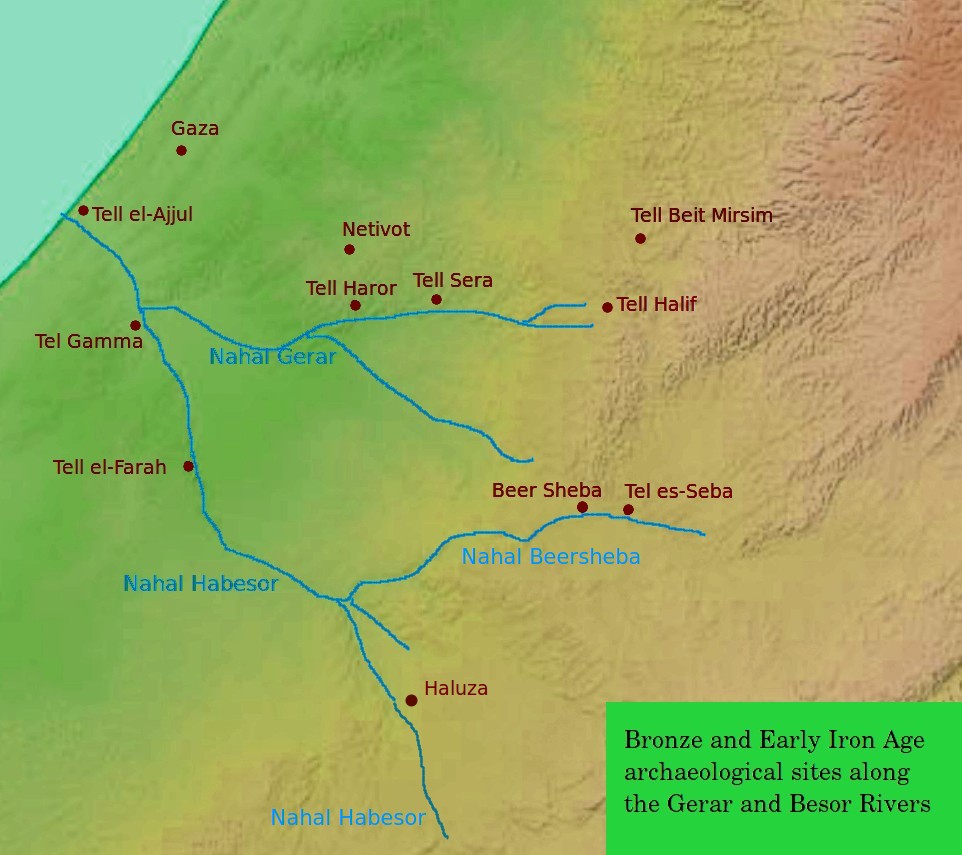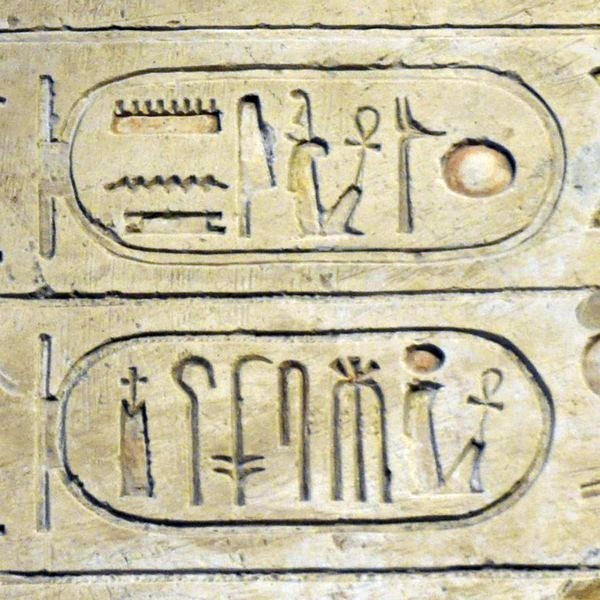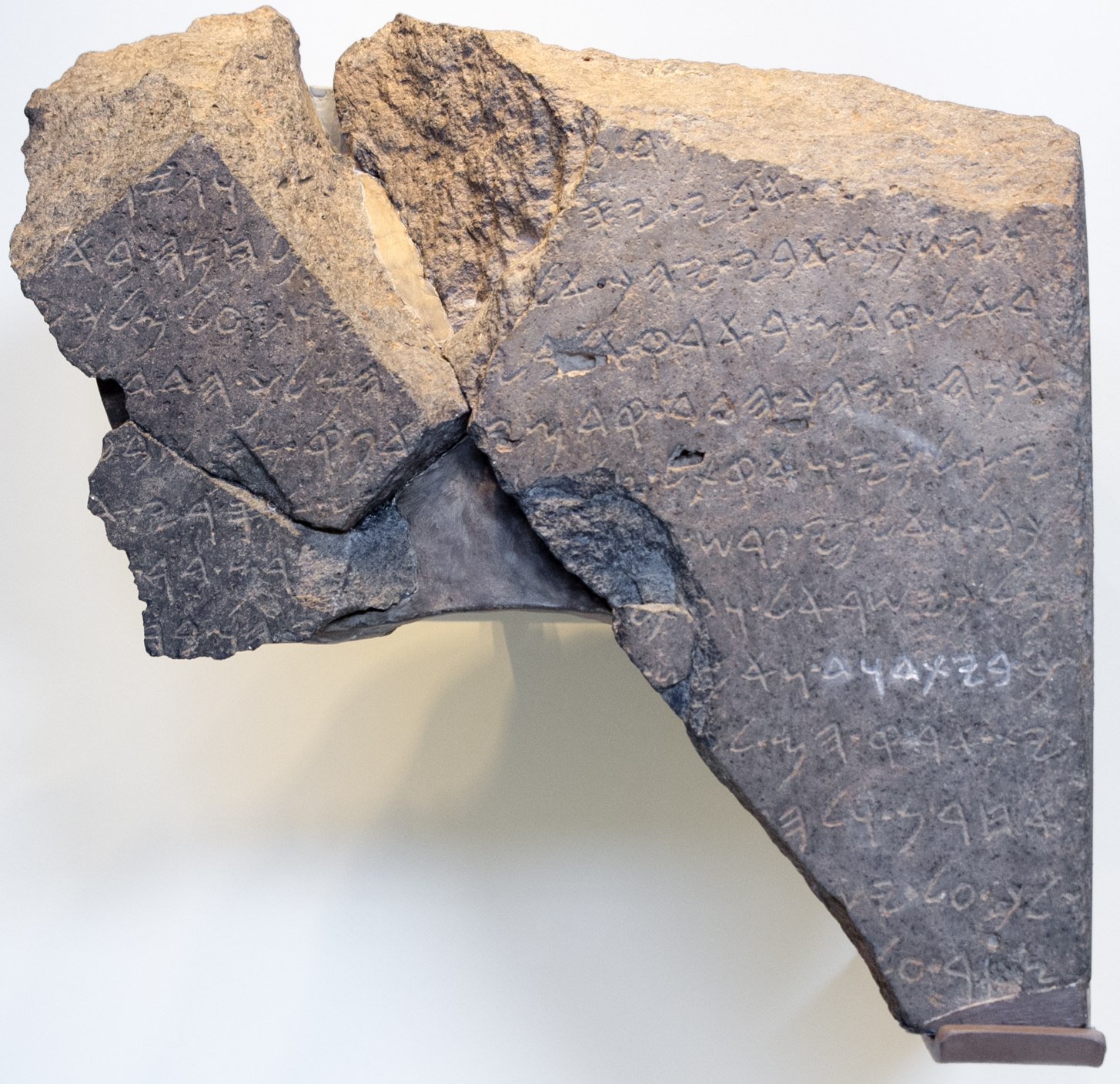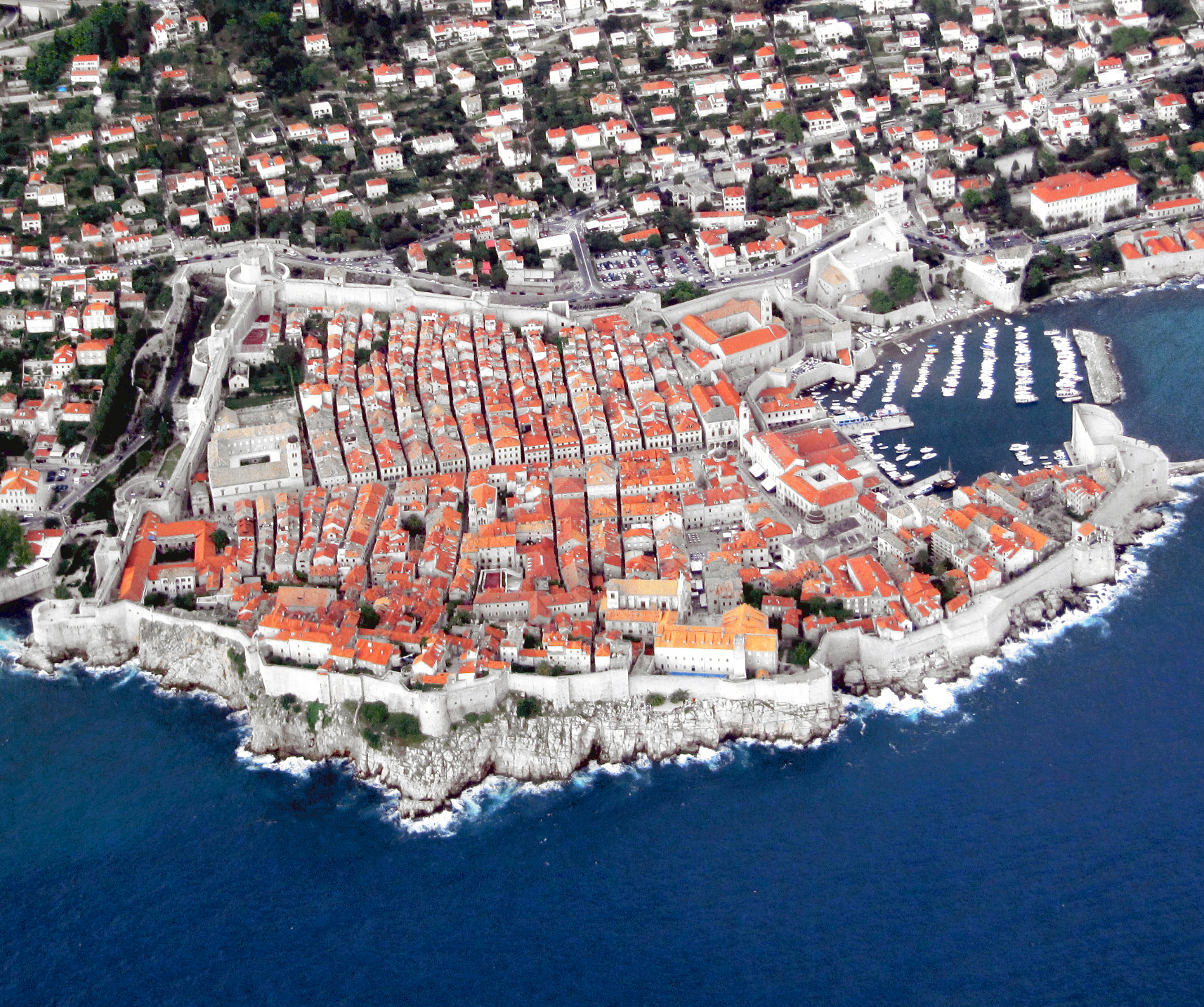|
Philistines
Philistines (; LXX: ; ) were ancient people who lived on the south coast of Canaan during the Iron Age in a confederation of city-states generally referred to as Philistia. There is compelling evidence to suggest that the Philistines originated from a Greek immigrant group from the Aegean. The immigrant group settled in Canaan around 1175 BC, during the Late Bronze Age collapse. Over time, they intermixed with the indigenous Canaanite societies and assimilated elements from them, while preserving their own unique culture. In 604 BC, the Philistines, who had been under the rule of the Neo-Assyrian Empire (911–605 BC), were ultimately vanquished by King Nebuchadnezzar II of the Neo-Babylonian Empire. Much like the kingdoms of Israel and Judah, the Philistines lost their autonomy by the end of the Iron Age, becoming vassals to the Assyrians, Egyptians, and later Babylonians. Historical sources suggest that Nebuchadnezzar II destroyed Ashkelon and Ekron due to the Phil ... [...More Info...] [...Related Items...] OR: [Wikipedia] [Google] [Baidu] |
Philistia
Philistia was a confederation of five main cities or pentapolis in the Southwest Levant, made up of principally Gaza, Ashkelon, Ashdod, Ekron, Gath, and for a time, Jaffa (part of present-day Tel Aviv-Yafo). Scholars believe the Philistines were made up of people of an Aegean background that from roughly 1200 BC onwards settled in the area and mixed with the local Canaanite population, and came to be known as '' Peleset'', or Philistines. At its maximum territorial expansion, its territory may have stretched along the Canaanite coast from Arish in the Sinai (today's Egypt) to the Yarkon River (today's Tel Aviv), and as far inland as Ekron and Gath. Nebuchadnezzar II invaded Philistia in 604 BC, burned Ashkelon, and incorporated the territory into the Neo-Babylonian Empire; Philistia and its native population the Philistines disappear from the historic record after that year. History Ancient Egyptian hieroglyphic records from the New Kingdom period record a group of ... [...More Info...] [...Related Items...] OR: [Wikipedia] [Google] [Baidu] |
Ekron
Ekron (Philistine: 𐤏𐤒𐤓𐤍 ''*ʿAqārān'', , ), in the Hellenistic period known as Accaron () was at first a Canaanite, and later more famously a Philistine city, one of the five cities of the Philistine Pentapolis, located in present-day Israel. In 1957, Ekron was first identified with the mound of Khirbet el-Muqanna (Arabic) or Tel Miqne (Hebrew), near the depopulated Palestinian village of 'Aqir, on the basis of the large size of the Iron Age archaeological remains; the judgement was strengthened by the discovery in 1996 of the Ekron inscription. The tell lies west of Jerusalem, and north of Tel es-Safi, the almost certain site of the Philistine city of Gath, on the grounds of Kibbutz Revadim on the eastern edge of the Israeli coastal plain. The other main cities of the Philistine Pentapolis beyond Ekron and Gath were Gaza, Ashkelon, and Ashdod. In the Bible In the Hebrew Bible, Ekron is mentioned initially in : :''This is the land that still remai ... [...More Info...] [...Related Items...] OR: [Wikipedia] [Google] [Baidu] |
Peleset
The Peleset () or Pulasati are a people appearing in fragmentary historical and iconographic records in ancient Egyptian from the Eastern Mediterranean in the late 2nd millennium BCE. They are hypothesised to have been one of the several ethnic groups of which the invading Sea Peoples were said to be composed. Today, historians generally identify the Peleset with the Philistines. Records Very few documentary records exist, both for the Peleset and for the other groups hypothesized as Sea Peoples. One group of people recorded as participating in the Battle of the Delta were the ''Peleset''; after this point in time, the "Sea Peoples" as a whole disappear from historical records, the Peleset being no exception. Archaeological evidence supports the existence of a migration of Peleset/Philistines from the Aegean into the southern Levant. The five known sources are below: * : Mortuary Temple of Ramesses III: records a people called the ''P-r-s-t'' (conventionally ''Peleset'') am ... [...More Info...] [...Related Items...] OR: [Wikipedia] [Google] [Baidu] |
Canaan
CanaanThe current scholarly edition of the Septuagint, Greek Old Testament spells the word without any accents, cf. Septuaginta : id est Vetus Testamentum graece iuxta LXX interprets. 2. ed. / recogn. et emendavit Robert Hanhart. Stuttgart : Dt. Bibelges., 2006 . However, in modern Greek, the accentuation is , while the Novum Testamentum Graece, current (28th) scholarly edition of the New Testament has . was an Ancient Semitic-speaking peoples, ancient Semitic-speaking civilization and region of the Southern Levant during the late 2nd millennium BC. Canaan had significant geopolitical importance in the Late Bronze Age Amarna Period (14th century BC) as the area where the sphere of influence, spheres of interest of the Egyptian Empire, Egyptian, Hittites, Hittite, Mitanni, and Assyrian Empires converged or overlapped. Much of present-day knowledge about Canaan stems from Excavation (archaeology), archaeological excavation in this area at sites such as Tel Hazor, Tel Megiddo, ... [...More Info...] [...Related Items...] OR: [Wikipedia] [Google] [Baidu] |
Late Bronze Age Collapse
The Late Bronze Age collapse was a period of societal collapse in the Mediterranean basin during the 12th century BC. It is thought to have affected much of the Eastern Mediterranean and Near East, in particular Egypt, Anatolia, the Aegean, eastern Libya, and the Balkans. The collapse was sudden, violent, and culturally disruptive for many Bronze Age civilizations, creating a sharp material decline for the region's previously existing powers. The palace economy of Mycenaean Greece, the Aegean region, and Anatolia that characterized the Late Bronze Age disintegrated, transforming into the small isolated village cultures of the Greek Dark Ages, which lasted from to , and were followed by the better-known Archaic Age. The Hittite Empire spanning Anatolia and the Levant collapsed, while states such as the Middle Assyrian Empire in Mesopotamia and the New Kingdom of Egypt survived in weakened forms. Other cultures such as the Phoenicians enjoyed increased autonomy and pow ... [...More Info...] [...Related Items...] OR: [Wikipedia] [Google] [Baidu] |
Kingdom Of Israel (united Monarchy)
The Kingdom of Israel (Biblical Hebrew, Hebrew: מַמְלֶכֶת יִשְׂרָאֵל, ''Mamleḵeṯ Yīśrāʾēl'') was an History of ancient Israel and Judah, Israelite kingdom that may have existed in the Southern Levant. According to the Deuteronomistic history in the Hebrew Bible, a United Monarchy or United Kingdom of Israel existed under the reigns of Saul, Ish-bosheth, David, and Solomon, encompassing the territories of both the later kingdoms of Kingdom of Judah, Judah and Kingdom of Israel (northern kingdom), Israel. Whether the United Monarchy existed—and, if so, to what extent—is a matter of ongoing academic debate. During the 1980s, some biblical scholars began to argue that the archaeological evidence for an extensive kingdom before the late 8th century BCE is too weak, and that the methodology used to obtain the evidence is flawed. Scholars remain divided among those who support the historicity of the biblical narrative, those who doubt or dismi ... [...More Info...] [...Related Items...] OR: [Wikipedia] [Google] [Baidu] |
Israelites
Israelites were a Hebrew language, Hebrew-speaking ethnoreligious group, consisting of tribes that lived in Canaan during the Iron Age. Modern scholarship describes the Israelites as emerging from indigenous Canaanites, Canaanite populations and other peoples.Mark Smith in "The Early History of God: Yahweh and Other Deities of Ancient Israel" states "Despite the long regnant model that the Canaanites and Israelites were people of fundamentally different culture, archaeological data now casts doubt on this view. The material culture of the region exhibits numerous common points between Israelites and Canaanites in the Iron I period (c. 1200–1000 BCE). The record would suggest that the Israelite culture largely overlapped with and derived from Canaanite culture ... In short, Israelite culture was largely Canaanite in nature. Given the information available, one cannot maintain a radical cultural separation between Canaanites and Israelites for the Iron I period." (pp. ... [...More Info...] [...Related Items...] OR: [Wikipedia] [Google] [Baidu] |
Hebrew Bible
The Hebrew Bible or Tanakh (;"Tanach" . '' Random House Webster's Unabridged Dictionary''. ; ; or ), also known in Hebrew as (; ), is the canonical collection of scriptures, comprising the Torah (the five Books of Moses), the Nevi'im (the Books of the Prophets), and the [...More Info...] [...Related Items...] OR: [Wikipedia] [Google] [Baidu] |
Ramesses III
Usermaatre Meryamun Ramesses III was the second Pharaoh of the Twentieth dynasty of Egypt, Twentieth Dynasty in Ancient Egypt. Some scholars date his reign from 26 March 1186 to 15 April 1155 BC, and he is considered the last pharaoh of the New Kingdom of Egypt, New Kingdom to have wielded substantial power. His long reign saw the decline of Egyptian political and economic power, linked to a series of invasions and internal economic problems that also plagued pharaohs before him. This coincided with a decline in the cultural sphere of Ancient Egypt. However, his successful defense was able to slow down the decline, although it still meant that his successors would have a weaker military. He has also been described as a "warrior Pharaoh" due to his strong military strategies. He led the way by defeating the invaders known as "the Sea Peoples", who had caused destruction in other civilizations and empires. He was able to save Egypt from collapsing at the time when Late Bronze Age c ... [...More Info...] [...Related Items...] OR: [Wikipedia] [Google] [Baidu] |
Kingdom Of Judah
The Kingdom of Judah was an Israelites, Israelite kingdom of the Southern Levant during the Iron Age. Centered in the highlands to the west of the Dead Sea, the kingdom's capital was Jerusalem. It was ruled by the Davidic line for four centuries. Jews are named after Judah, and primarily descend from people who lived in the region. The Hebrew Bible depicts the Kingdom of Judah as one of the two successor states of the Kingdom of Israel (united monarchy), United Kingdom of Israel, a term denoting the united monarchy under biblical kings Saul, David, and Solomon and covering the territory of Judah and Kingdom of Israel (Samaria), Israel. However, during the 1980s, Biblical minimalism, some biblical scholars began to argue that the archaeological evidence for an extensive kingdom before the late 8th century BCE is too weak, and that the methodology used to obtain the evidence is flawed. In the 10th and early 9th centuries BCE, the territory of Judah might have been limited ... [...More Info...] [...Related Items...] OR: [Wikipedia] [Google] [Baidu] |
Ashkelon
Ashkelon ( ; , ; ) or Ashqelon, is a coastal city in the Southern District (Israel), Southern District of Israel on the Mediterranean Sea, Mediterranean coast, south of Tel Aviv, and north of the border with the Gaza Strip. The modern city is eponym, named after the ancient seaport of Ascalon, which was destroyed in 1270 and whose remains are on the southwestern edge of the modern metropolis. The Israeli city, first known as Migdal (), was founded in 1949 approximately 4 km inland from ancient Ascalon at the Palestinian town of al-Majdal (). Its inhabitants had been exclusively Muslims and Christians, and the area had been allocated to the Palestine in the United Nations Partition Plan for Palestine; on the eve of the 1948 Arab–Israeli War the inhabitants numbered 10,000 and in October 1948, the city accommodated thousands more Palestinian refugees from nearby villages. The town was conquered by Israeli forces on 5 November 1948, by which time 1948 Palestinian expulsion ... [...More Info...] [...Related Items...] OR: [Wikipedia] [Google] [Baidu] |
City-state
A city-state is an independent sovereign city which serves as the center of political, economic, and cultural life over its contiguous territory. They have existed in many parts of the world throughout history, including cities such as Rome, Carthage, Athens and Sparta and the Italian city-states during the Middle Ages and Renaissance, such as Florence, Venice, Genoa and Milan. With the rise of nation states worldwide, there remains some disagreement on the number of modern city-states that still exist; Singapore, Monaco and Vatican City are the candidates most commonly discussed. Out of these, Singapore is the largest and most populous, and is generally considered to be the last real city-state left in the world, with full sovereignty, international borders, its own currency, a robust military, and substantial international influence in its own right. ''The Economist'' refers to it as the "world's only fully functioning city-state". Several non-sovereign cities enjoy a ... [...More Info...] [...Related Items...] OR: [Wikipedia] [Google] [Baidu] |







